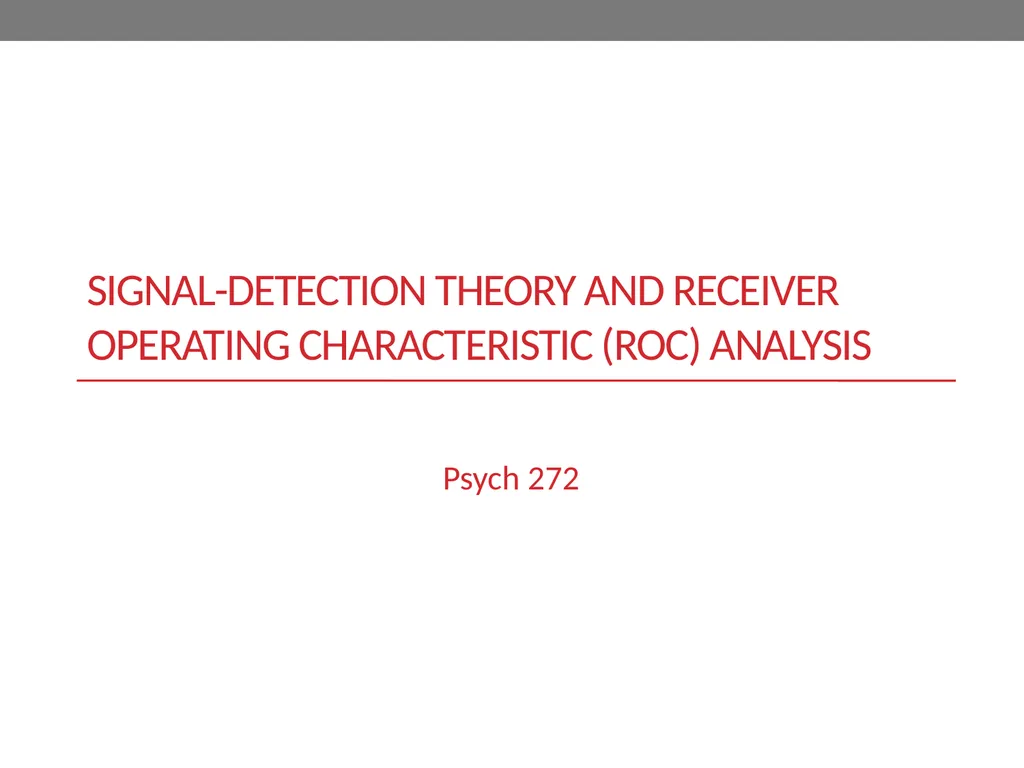
Signal-detection theory and receiver operating
Author: briana-ranney | Published: 2025-08-13
Description: Signal-detection theory and receiver operating characteristic (roc) analysis Psych 272 Eyewitness Memory and Wrongful Convictions Since the 1990s, DNA testing has overturned 318 wrongful convictions Eyewitness misidentifications which
Download Presentation
Download the PPT/PDF: Download
Transcript:
Loading transcript…